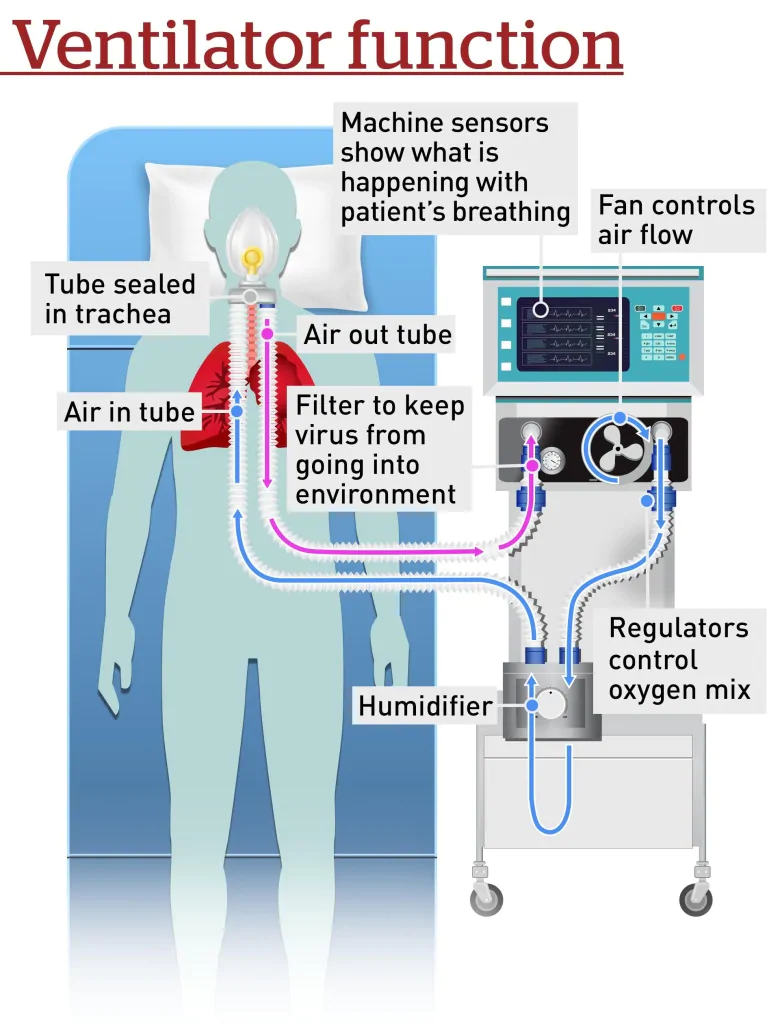In critical cases, COVID-19 attacks the lungs and restricts breathing to the point where a patient needs a ventilator to stay alive. However, in Canada, as in most other countries, there is a limited supply of these potentially life-saving machines. Here are answers to some key questions about them.

As the number of COVID-19 cases rises across Canada, doctors are discussing the delicate decisions some patients and families will need to make if physical distancing, handwashing and border restrictions fail to slow down the spread and intensive care units become overwhelmed.
In critical cases, COVID-19 attacks the lungs and restricts breathing to the point where a patient needs a machine called a ventilator to stay alive.
However, in Canada, as in most other countries, there is a limited supply of these devices.
Faced with spikes in critical cases, physicians in Italy are already facing the reality of having to make life-and-death decisions about who gets a ventilator and who doesn’t.
Here are some answers to common questions in this country about the supply and use of ventilators during the pandemic.
Who needs a ventilator?
The World Health Organization (WHO) estimates 80 per cent of people with COVID-19 get better on their own without needing to be treated in hospital.
Those who are hospitalized are often given oxygen to help them breathe, either through a nasal mask, sometimes called a respirator, or a mouthpiece.
But when someone suffers from severe pneumonia, their lungs aren’t able to do their job of getting oxygen in and carbon dioxide waste out. The lungs start filling with fluid. It can feel like you are drowning.
In such serious cases, a mechanical ventilator may help.
What does a ventilator do?
Dr. Anand Kumar, a critical care physician in Winnipeg, said patients critically ill with COVID-19 need specialized ventilator care.
“If a person with a critical illness is going on a ventilator, that’s the only option,” Kumar said. “They will otherwise die.”
The goal of mechanical ventilation is to allow air to go in and out of the chest and lungs until the patient recovers.

The device has regulators to set the right mix of air and oxygen and a fan or turbine that manages the flow to the patient. The patient must be intubated, meaning a tube will be inserted beyond the vocal cords into the airway, or trachea, and sealed to ensure the air goes where it’s supposed to.
Air will pass through a humidifier and into the patient’s lungs, before being released through a separate tube.
A ventilator provides gas enriched with up to 100 per cent oxygen.
How many ventilators does Canada have?
Dr. Theresa Tam, Canada’s chief public health officer, said Monday that of the 220,000 people who’ve been tested for COVID-19 in this country, three per cent have been confirmed positive. Of the more than 6,000 cases diagnosed so far, seven per cent have required hospitalization, three per cent are critical, and one per cent have died. However, the testing numbers have limitations.
In Ontario alone, confirmed or suspected COVID-19 cases now account for about one out of four patients currently in intensive care units in the province.
Other data compiled by CBC News/Radio-Canada suggests that Canada has 7,752 total ventilators across all provinces, with another 371 on order. Currently, about 80 per cent of the capacity is devoted to non-COVID-19 cases.
Is that enough ventilators?
Dr. Srinivas Murthy, an associate professor of medicine at the University of British Columbia and a critical care physician, says there is concern about the number of critically ill patients who could arrive in hospital over the next

